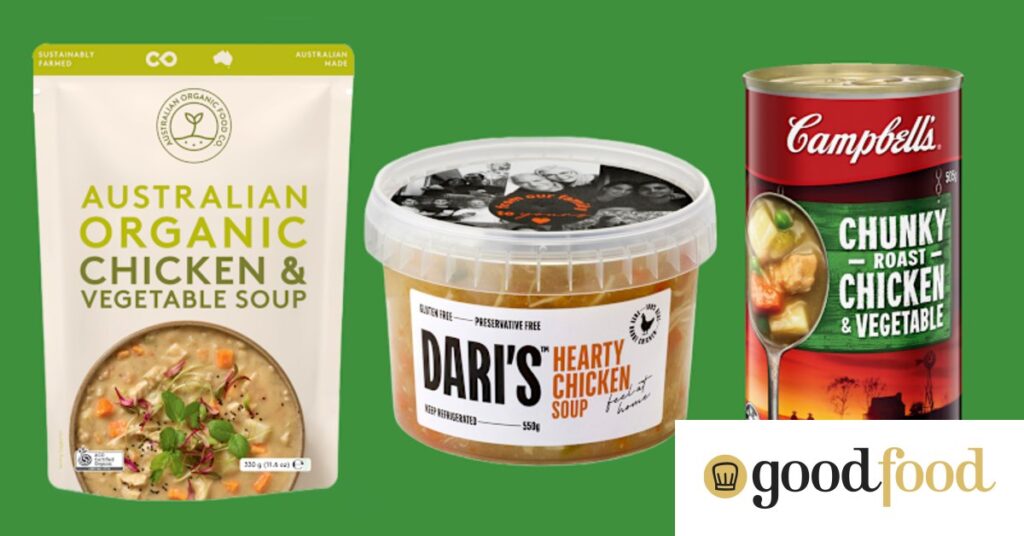
In recent years, the nutritional landscape of supermarket soups in Australia has undergone a significant transformation. Once considered a poor substitute for homemade broths, many pre-packaged chicken soups now rival their homemade counterparts in terms of health benefits. This shift is largely due to advancements in food processing and a growing consumer demand for healthier options.
Chicken soup, a staple comfort food, is often sought after during bouts of illness or simply as a nourishing meal. With a plethora of options available on supermarket shelves, how do these soups measure up nutritionally? According to dietitian Susie Burrell, the key is to look for soups with a high percentage of actual chicken and minimal additives.
Understanding the Nutritional Profiles
While homemade soups are traditionally viewed as the healthier option, many supermarket varieties now offer comparable nutritional benefits. The highest percentage of chicken found in these soups was 15%, which, although it may sound low, is actually quite substantial given that the base of most soups is stock and water.
However, consumers should be wary of the sodium content in these soups. A good rule of thumb is to aim for options with 600mg to 800mg of sodium per serving, as many packaged soups contain added salt. Additionally, soups with shorter ingredient lists are generally less processed and contain more whole foods.
Fresh, Canned, and Pouch Soups: A Comparative Analysis
Modern processing techniques have expanded the range of long-life soup options available, many of which do not contain extra additives. Fresh and pouch soups are typically strong nutritionally, while canned soups often have more additives. Here’s a closer look at some popular options:
- Dari’s Hearty Chicken Soup (550g, $6.80): With 70% chicken broth and 11% chicken and vegetables, this fresh soup is nutritionally robust. However, it contains nearly 900mg of sodium per serve.
- Coles Perform Chicken Minestrone Soup (450g, $5): This high-protein meal soup contains minimal additives and offers a nutritious, vegetable-rich meal with nearly 30g of protein and 13g of dietary fibre.
- Woolworths Hearty Chicken Soup (300g, $4): With 35% vegetables and 15% chicken, this fresh soup is nutritionally sound but contains added sugar.
Evaluating Canned Soups
Canned soups, while convenient and cost-effective, often contain more additives. Here are some options available in Australian supermarkets:
- Campbell’s Chunky Roast Chicken and Vegetable (505g, $4.50): With a base of stock, 36% vegetables, and 7% chicken, this soup is a budget-friendly meal option, though it contains flavor enhancers and added sugars.
- Heinz Big’N Chunky Chicken and Corn (535g, $4.40): This soup contains more carbohydrates than protein, with 35% corn and just 4% chicken.
- Campbell’s Cream of Chicken Soup (420g, $1.95): Often used as a base, this soup is heavily processed with a high salt content and numerous additives.
Pouch Soups: A Modern Convenience
Pouch soups offer a convenient and often healthier alternative to canned varieties. Here are some noteworthy options:
- Australian Organic Chicken & Vegetable Soup (330g, $4.50): With a hearty chicken and vegetable base, this soup is more of a meal than a light broth, though it contains a significant amount of sodium.
- La Zuppa Creamy Chicken and Vegetable (400g, $4.70): Known for its clean ingredient list, this soup contains no added salts or sugars but provides a decent dose of sodium if the entire pouch is consumed.
- Hart & Soul Chicken Noodle Soup Pouch (100g, $1.60): Offering few calories, this soup is ideal for those looking to fill up without consuming too many calories or nutrients.
Looking Ahead: The Future of Supermarket Soups
The evolution of supermarket soups reflects broader trends in the food industry, where consumer demand for healthier, more natural products is driving innovation. As processing techniques continue to improve, the line between homemade and store-bought soups may blur even further.
For consumers, the key is to remain informed and discerning, reading labels carefully and prioritizing soups with high-quality ingredients and minimal additives. As the market continues to evolve, it will be interesting to see how manufacturers respond to the ongoing demand for nutritious, convenient meal options.
In conclusion, while homemade soups will always have their place, the growing range of healthy supermarket options provides consumers with a convenient and often cost-effective alternative. With careful selection, these soups can be a valuable addition to a balanced diet.







